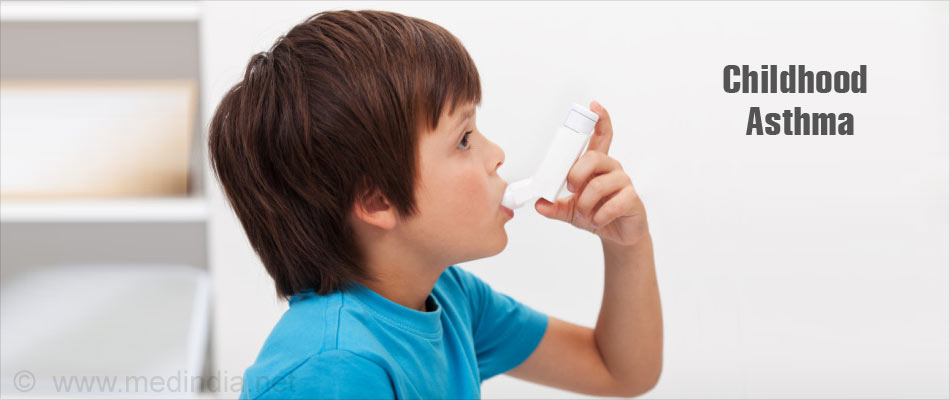- What is Asthma? - (http://www.asthmasocietyofindia.org/)
- Asthma Flare-Ups - (http://kidshealth.org/en/parents/flare-up.html)
- Asthma in the US - (http://www.cdc.gov/vitalsigns/asthma/)
- Asthma and Children Fact Sheet - (http://www.lung.org/lung-health-and-diseases/lung-disease-lookup/asthma/learn-about-asthma/asthma-children-facts-sheet.html?)
- Indian study on epidemiology of asthma, respiratory symptoms and chronic bronchitis in adults (INSEARCH). - (http://www.ncbi.nlm.nih.gov/pubmed/22871327)
- Differences between adult and childhood asthma. - (http://www.ncbi.nlm.nih.gov/pubmed/10984396)
- The mechanism of corticosteroids in treating asthma - (http://www.ncbi.nlm.nih.gov/pubmed/3026210)
Information About Asthma in Children and Adults
Asthma affects 17.23 million people in India and the number rises every year. It is characterized by severe wheezing and breathlessness that vary in their degree of severity from one individual to another.
The air passages in the lungs are inflamed while the nerve endings are sensitive, which become prone to irritation. When the linings of the passages swell, it leads to constriction of the passages, lowering the amount of air entering in and out of the lungs.

Anatomy of the Lung
There are two spongy lungs present in the chest cavity and protected by the ribs. The left lung is a little smaller than the right lung to accommodate the heart, which is present in the left side of the chest cavity.
Air is inhaled through the nose, which then passes through the pharynx, larynx and the trachea. The trachea branches into two bronchi just before it enters the lung. Within the lung, the bronchi branch into smaller secondary bronchi. The secondary bronchi branch into three bronchi in the right lung and into two bronchi in the left lung.
The bronchi branch out into smaller units called bronchioles and the terminal bronchioles have the ability to dilate and are elastic. The bronchioles have alveoli at their end, which are the functional units of the lungs that aid in the exchange of air. These alveoli are present in clusters called the alveolar sacs.
Facts About Asthma
Asthma is a chronic disease that leads to the inflammation of the lungs.
- 26 million Americans have asthma while Indian statistics shows that 17.3 million Indians have asthma. This makes it a common disease.
- Adult onset asthma is the same disease that affects children.
- The symptoms of both the disease are the same and the medications provided are similar.
- However, the challenges faced by children with asthma are different from those faced by an adult.
- There is a 10% increase in asthma cases every year.
Asthma in Children and Adults
- Children have smaller airways than adults which make an asthmatic attack a lot more severe in them.
- Viral infections and some allergens are the common causes of asthma among children.
- Adult asthma is largely caused due to allergens that include smoking cigarettes, dust mites and pollen. As children, allergic reactions to certain allergens may be manifested in forms other than asthma, however, as the body gets used to the allergen, it may develop into asthma at a later stage, called adult onset asthma.
- Both adults and children prone to asthma are affected with asthma symptoms if they are exposed to any of these allergens:
- Air pollution
- Smoke
- Pet hair and saliva
- Emotional stress
- Excitement
- Children are highly susceptible to second hand smoking and face the risk of flare ups.

- Children with asthma display symptoms that are not continuous. The symptoms exist for a period of time and then there are periods when there are no flare ups. Normally, around puberty, the symptoms of asthma among children completely disappear. Adults, however, suffer from persistent symptoms.
- Women have a higher chance of developing asthma after 20 than men, which is probably associated with hormonal changes.
Asthma Treatment
Identifying the irritant:
The primary step in asthma treatment is to identify the irritant that triggers asthma. This could be due to a number of agents, and eliminating one by one to find the source would aid in avoiding it.
Symptoms monitoring:
Asthma symptoms should be closely monitored at home to understand the rhythm and to safeguard against severe trauma.
Medication:
An asthma action plan should be prepared in the event of some emergency and asthma medications should be taken regularly. Many children seem to outgrow asthma, but asthma in adults persist. Adults may have other health complications and asthma medications could react with medications taken for other health problems. The cross reactivity of drugs should be monitored.

What are the Symptoms of Asthma?
The symptoms of asthma include:
- Cough
- Pain in the chest
- Congestion
- Wheezing
- Breathlessness
- Difficulty in sleeping
- Increased secretion of mucus in the airways
What is an Asthma Action Plan?
Untreated asthma, especially severe flare ups can be dangerous. To help the patient and to give caregivers and colleagues a better understanding of the medical condition and the required support in the event of an emergency, an asthma action plan needs to be charted out.
- Discuss asthma medications with a medical practitioner
- Discuss when the medications need to be increased to avoid a flare up
- Identify asthma triggers and ways to avoid them
- Plan carefully the mode of action during a flare up
- Provide this action plan to relatives, friends, caregivers or office colleagues
Asthma action plans should be written down clearly and an action plan will vary from one child to another.
What is an Asthma Flare Up? (also called an Asthma Flare, Attack, Episode, or Exacerbation)
Patients may go through period of no symptoms of asthma, but there could be periods when asthma symptoms are more severe and spaced close to each other. The affected person may find it difficult to speak, sit or even eat.
The bronchi and the bronchioles for an asthmatic patient are inflamed but during an asthma flare up, they become even more pronounced. A lot of mucus begins to clog the important airways and the muscles around these airways become tighter, this makes breathing very difficult.
Is Inhaler Better or Nebulizer?
Both an inhaler as well as a nebulizer deliver medication are equally effective. The method of intake of medication depends upon the convenience of the patient.
A nebulizer delivers the medications when the child/adult fits the mask onto the face. There is a visible mist of medication that passes through the mask and which the child can inhale.

An inhaler is more for an older child or adult who can operate the inhaler and can inhale the medication. There are monitored dose inhalers that provide specific concentrations of the drug and which can be used by children as well as adults.
Facts About Maintaining Your Inhaler
- The inhaler is a sought after method of drug delivery among patients suffering from asthma. However, inhalers should be used only by a single patient and should not be shared as it could lead to a transmission of infections.
- The mouthpiece of the inhalers should be cleaned once a week with a clean and dry cloth. No part of the inhaler should be dipped in water.
- It should be stored at room temperature.
- An inhaler should be changed when the dose count is low and the numbers are marked in red. A doctor should be consulted on re-filling.
- It should never be used beyond the expiry date.
A child or adult with asthma should never miss asthma medications as it could lead to dangerous flare-ups, even if the symptoms seem to abate for a period of time, without consulting a medical practitioner.
Steroids - Myths and Facts
In some patients, the use of normal bronchodilator inhalers are not helpful in controlling the symptoms. In that case, your doctor might prescribe you a steroid inhaler.
The way these steroids work is that it reduces your body’s immune response to the allergen and might give a better control over your condition.
But the frequent fear that prevails among the people are about steroid side effects and that it outweighs the benefits of the medicine. But that’s a myth. One reason is that the side effects which everyone talks about are common only in oral pills and injections and what we use here are the inhalers (acts locally).

Here are some of the myths and facts about steroid inhalers:
| Myths | Facts about Steroid Medicine |
| "No matter how I take steroids, the side effects are the same." | The inhaled steroids in the asthma medicine go just to the site of the problem-your lungs. This is different than the kind of steroids you inject or take in a pill, which goes throughout the body and is riskier. |
| "Taking inhaled steroids will make me grow muscles and hair." | The steroids in asthma medicine are a different type of steroid than the muscle-building,hair-growing kind. And because you inhale the medicine, it goes right to your lungs where it's needed. |
| "Taking inhaled steroids will stunt my child's growth." | For children, there may be a slight slowing in growth from inhaled steroids. The difference in height is very small, and this side effect is rare. But for most people, this is made up for by the improved ability to breathe because of the positive effects of the medicine. |
| "I can control my asthma using only my quick-relief inhaler." | Many people will only find relief and get good control over their asthma by using controller medicine. |










